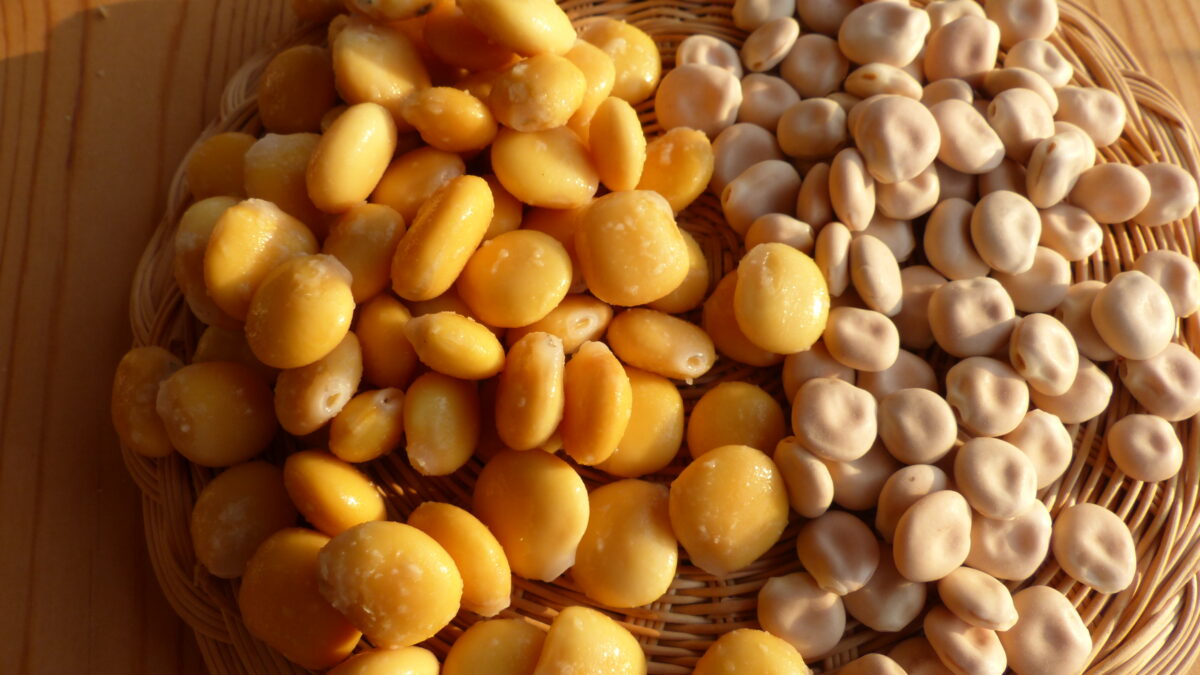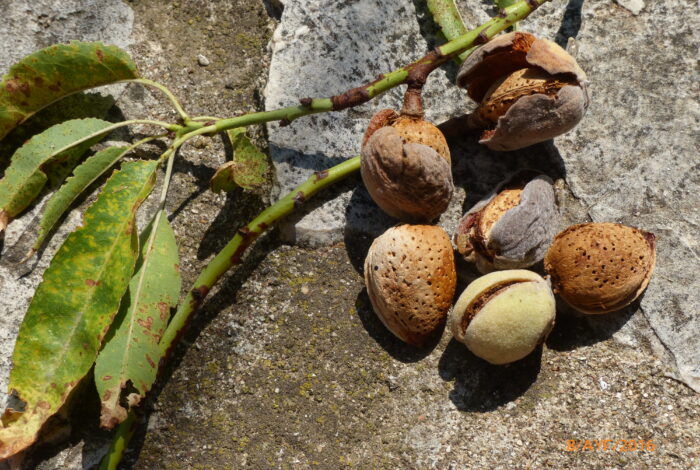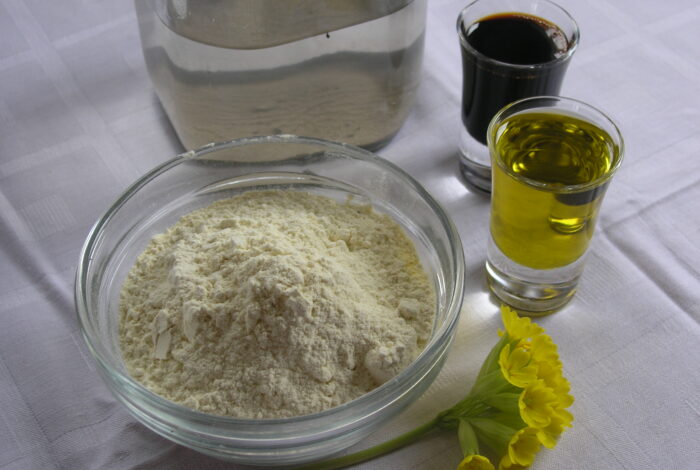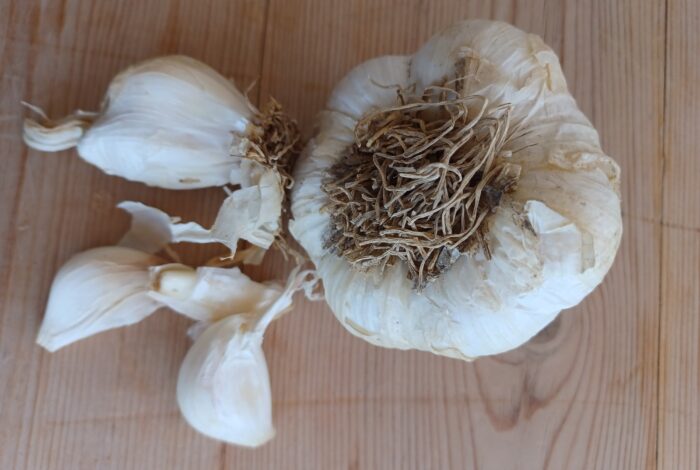Soultana-Maria Valamoti
In contrast to other legumes, lupins were not cultivated from the dawn of agriculture in Greece. Archaeological excavations at neolithic sites have not uncovered any evidence of them, and they continue to be absent right through the millennia of the subsequent Bronze Age. One exception is a finding from Akrotiri on Santorini, where lupins were found mixed among a handful of Santorini fava seeds. As such, lupins did not join other legumes, such as lentils and Lathyrus clymenum, in the cultivated aspect of the ancient Greek diet until much later.
The ancient Greeks called lupins thermos. The word appears frequently in ancient texts, in direct contrast to the plant’s sparsity in the archaeobotanical data from the prehistoric period. The earliest reference can be found in the Hippocratic corpus (5th/4th c. BC), in which lupins are described as least harmful among the legumes. The same texts claim that lupins empower and warm the body, but can be made light and refreshing through processing. According to excerpts from 4th-century BC comedy, lupins were widely consumed by the masses. Due to the notably bitter flavour of the legume’s seeds, ancient Greek texts state that they should be soaked to become sweet and edible. Nowhere is this more vividly described than in the work of the 4th/3rd-century BC stoic philosopher Zeno of Citium, who likened his drunken behaviour to bitter lupin seeds that soften when soaked in water, as his naturally stern demeanour tended to soften only when he drank wine. Lupins were subject to a trade regulation in Athens, according to an inscription from the 2nd century BC. In Sparta, according to Polemon (3rd/2nd century BC), lupins were known as lysilaides. In fact, a work by the historian Molpis, written in the 2nd/1st c. BC, connects lupins with a festive dinner served in Sparta and known as kopis; among other foods, diners would also be treated to lupins. The Cynic philosopher Kratis (4th/3rd century BC) considered freedom the ability to carry a handful of lupins on his person and to be indifferent to everything.
Nevertheless, it remains uncertain when lupins were introduced to the ancient Greek diet. Archaeobotanical research at the Acropolis at Vergina, in Macedonia, which dates to between the 2nd and 1st century BC, has uncovered carbonised lupins, evidence of their spread throughout both northern and southern Greece. In the modern day, lupins are grown on a limited scale in Mani, where they are stored in sacks and then placed underwater for several days to remove their bitterness. They are regularly consumed during Lent, especially on Clean Monday.










